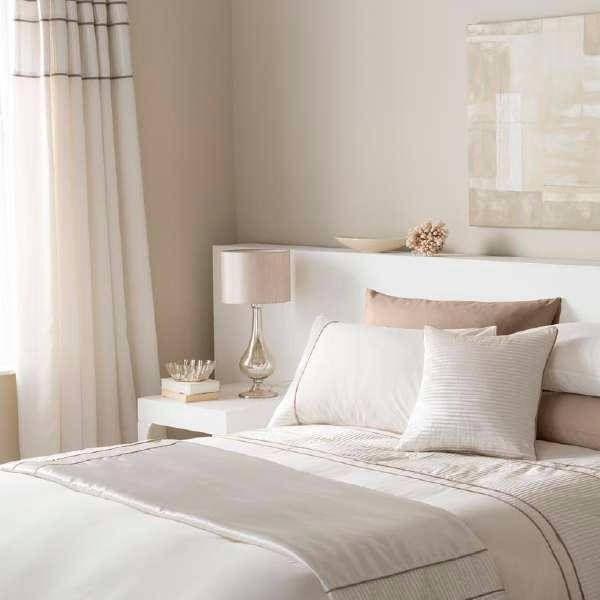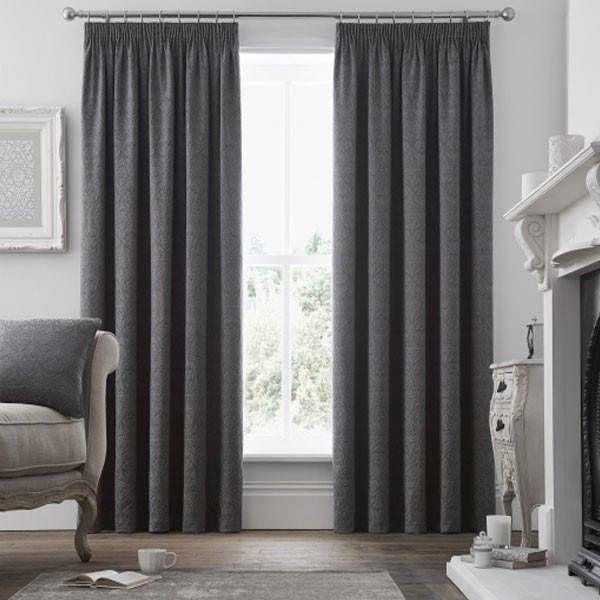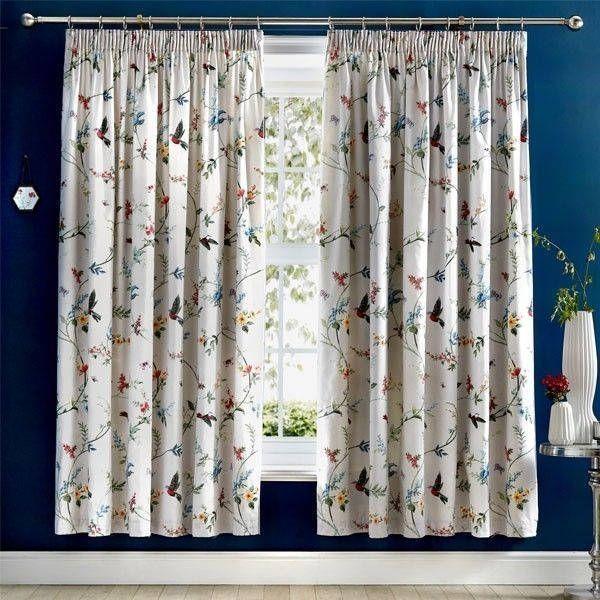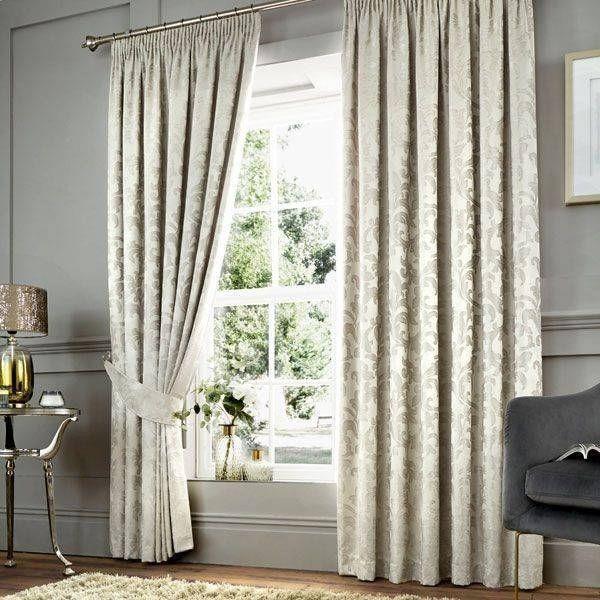A Guide to Buying Curtains For Your Home
Choosing curtains for your home can be simple if you have the know-how when it comes to picking the right size, fabric and heading. Our step-by-step guide will take you through the process of measuring, choosing and decorating your curtains so you’re not left in the dark when it comes to picking out window or door treatments.
Choosing a curtain
Before you measure the width and length of the curtains, you need to decide what heading style you want. This will determine how your curtains attach to the pole or track, and will affect the drape and overall look of the curtains.
Eyelet curtains
This type of curtain is fed through the pole, usually through metal rings that are part of the curtain material. Eyelet curtains will create large, even folds and work well with thicker fabrics.

Pencil pleat curtains
Curtains with a pencil pleat will have plastic hooks attached to the header that can be attached to a track or pole. Pencil pleat curtains will have many folds (usually about the width of a pencil) and will create a ruched, gathered look.
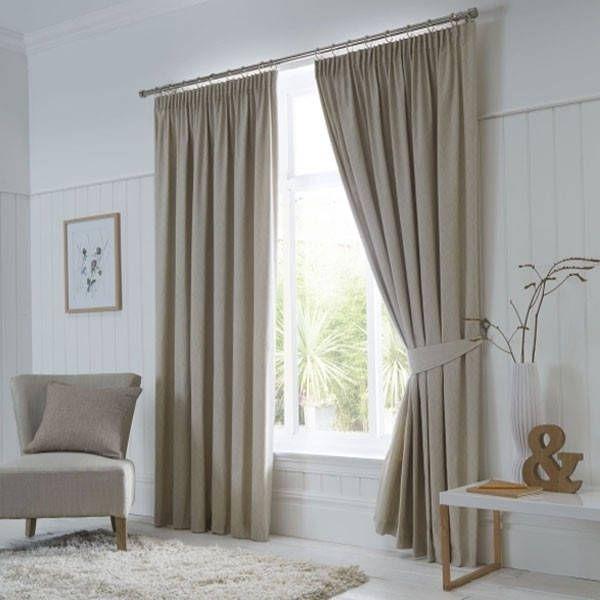
Tab top curtains
These curtains have exposed loops as part of the header that are drawn through a curtain pole. Because the rod is exposed with tab top curtains, it is important to consider what type of pole and decorative elements to have to accompany them.

Choose a curtain lining
Linings provide extra warmth and insulation for your home, and will provide a better drape. There are four main types of curtain lining:
| Lining type | Description |
| Standard lining | This is a standard cotton lining. |
| Blackout lining | Blackout curtain linings are designed to reduce the amount of light into your room while protecting the fabric from fading in the sunlight. |
| Polycotton lining | A polyester and cotton blend lining will give the same look and feel as a standard lining, but at a lower price. |
| Thermal lining | This is a thicker lining, which is great for providing insulation for single glazed windows or doors. It will also help to keep a room cool in the summer. |
What room are your curtains for?
Curtains can provide various functions for different rooms in the home, so it’s important that you choose the right type:
Bedroom
Blackout curtains are usually a good option for the bedroom as they keep your room dark and will to keep it cool.
Living room
Style can be taken over functionality here as you’ll want curtains that complement and enhance your living room decor. A lining will also help to keep draughts out and reduce the glow from the street.
How to measure for curtains
To make sure you buy the right curtains for a room, you should ensure they are the best possible fit by measuring your window or door space carefully.
Measure the pole, not the window or door
The first mistake that people often make when measuring the width of curtains is to measure the window or door itself as this will not sufficiently cover the space. Instead, you must measure the curtain pole or track.
-
For curtain poles, you should measure between the decorative end caps
-
For curtain tracks, measure the full width of the track
-
For curtain tracks that overlap, measure the width of the overlap in addition to the full width of the track and add them together
Calculate the curtain width
To ensure you have a good overlap and nice draping when the curtains are hanging, you need to give yourself a little extra curtain material. The general rule is to multiply the width of the curtain pole or curtain track by 1.5. For example, if your pole is 300cm long, you’ll need to do the following sum:
300 x 1.5 = 400
If the sizes available do not correspond with your measurement exactly, go for the wider option as bigger is better.
Work out the curtain length
When measuring the length of your curtains, you need to consider whether you want them to fall at the windowsill, below the sill or to the floor. Depending on your preference, this is where you should measure to:
-
At the sill - measure to 1.25cm above the window/door sill
-
Below the sill - measure to 15cm below the window/door sill
-
To the floor - measure to 1.5cm from the floor
Deciding where to measure from depends on whether you’ve used a track or a pole:
-
For curtain poles, measure from the top for eyelet or tab top curtains, while pencil pleat curtains will need to be measured from the bottom of the curtain rings
-
For curtain tracks, you simply need to measure from the top of the track
Pick a fabric
How your curtains look and fit into your room decor is an important factor in selecting the right ones for your home. Here is a rundown of the most popular fabric finishes:
| Material | Properties |
|---|---|
| Cotton | Cotton curtains soften the look of a window or door while providing durability. |
| Velvet | Velvet curtains provide a sumptuous feel with a shine. |
| Sheer | Voile curtains have a very light finish and usually works well layered with other curtains. |
| Viscose |
Provides a silk-like lustre and a softer finish than cotton.
|
| Taffeta | Has a crisp smooth woven finish made from silk or synthetic fibres. |
Newsletter subscribers get 10% off
To keep up to date on the latest happenings at Linens Limited, including tips and advice, exclusive discounts and product updates, sign up to our newsletter today and receive a 10% discount off your first order.
